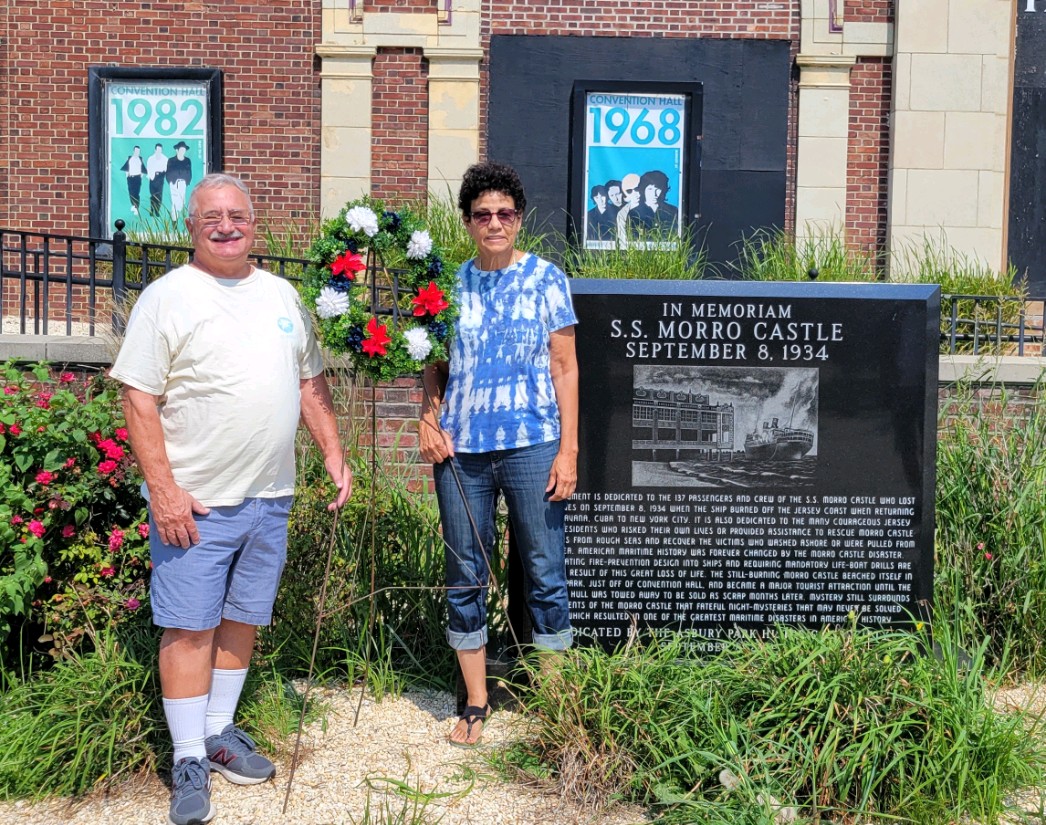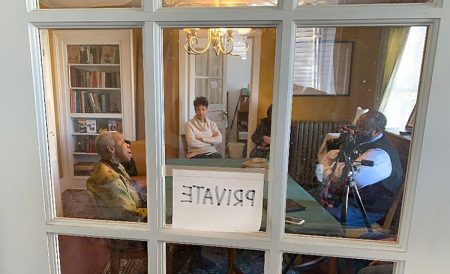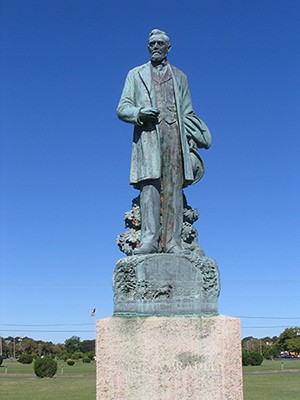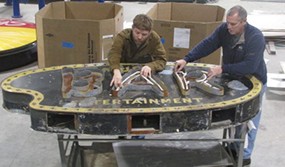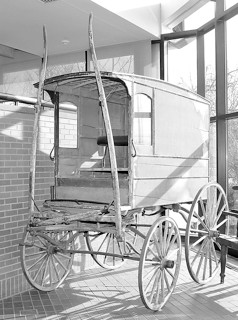Allied Environmental Signage, based in Farmingdale, has offered to restore the iconic neon sign from the Turf Club, a well-known Springwood Avenue night club in Asbury Park, for free.
“I thought I could help out. Somebody’s should do it and I have the facilities,” Company President Kevin White said earlier this week.
The Asbury Park Historical Society removed the unique sign while it was still hanging on the side of the now abandoned and gutted Turf Club. This was done several years ago with permission of the owner. The metal sign, adorned with electric and neon lights, measures about eight-feet wide, by four-feet tall, and about one-foot deep.
White said he saw an article in the Asbury Park Press about the society’s attempt to restore the sign and thought he could do the job. The sign was delivered to his company last Saturday.
According to White, an early examination shows that the sign has been repainted about four times, and he is trying to determine its original color. He also believes it was built in the late 1950s or early 1960s.
The Yates Sign Company, based in Neptune and then in Eatontown, was his family’s earlier business, and he is looking to see if it built the Turf Club sign.
“I don’t think so. But that it not an issue, we have built many signs like this,” he said.
White, 59, grew up in Belmar, but Asbury Park was a frequent stop. He was known to ride the Circuit, a famous teenage driving spot along the oceanfront. White said he also has a little connection with the Turf Club.
“I was in an adult softball league around 1980 and after games we used to hang out in the Turf Club, many in the league were African-Americans. The West Side was a mess then but the Turf Club was still open. It was one of the few places left standing- it was near the end for Springwood Avenue, though,” he said.
The restored Turf Club sign will be lit for the first time at the “Asbury Park’s West Side Music Legacy” exhibit, which will be held at the Monmouth County Historical Association in Freehold during the spring. The exhibit, put together by Classic Urban Harmony, focuses on Asbury Park’s black music scene from Count Basie to Billy Brown, and contains scores of rare photographs, phonograph records, posters, sheet music, and other memorabilia from Asbury Park’s West Side.
It is expected that the sign will then return to Asbury Park and hang in the new Senior Citizen’s Center, located directly across the street from the Turf Club.
“The historical society really appreciates Kevin’s commitment and it shows that people, even if they are not from here, still have a commitment to this city. Asbury Park means a lot to a lot of people and that only helps make our job easier,” society president Don Stine said.


